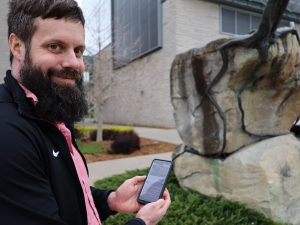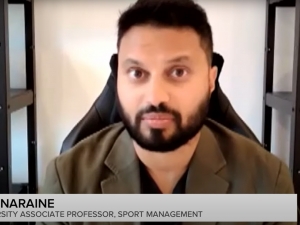Have you ever wondered how law enforcement officers on television always seem to know which suspects are telling the truth and which ones are being deceitful? Unfortunately in reality, it’s not quite as easy or accurate as it may look on the screen.
Research shows that existing techniques to detect deception are only up to around 57 per cent accurate.
Brock psychology researchers Angela Book and graduate student Michael Logue have discovered a way to increase the ability to detect deception in interviews of suspects to 86 percent.
“Knowing how important honesty is in testimony, we have to do better,” explained Logue, who came up with the research idea. “My thought was simple: If we want to know if people are telling us the truth, we have to actually listen to what they’re saying.”
The research involved combining an interview technique called the “cognitive interview” with an already existing coding system called the Reality Monitoring Scale.
Law enforcement officials currently use the cognitive interview when talking to witnesses and victims. It is a less intense, longer interview process that focuses on gathering as much information as possible, not just obtaining a confession.
The Reality Monitoring Scale is an objective coding system that focuses on the details and descriptions in a witness statement to determine how likely it is to be true or false.
“By improving the quality of the statement, we could improve the accuracy by letting the scale do its job” explains Logue. “They work together because the cognitive interview orients people to tell all details, like sights, sounds, spatial arrangements et cetera, which is exactly what the Reality Monitoring Scale uses to determine the truth.”
More than 150 undergraduate students participated in the two-part study. Before interacting with members of the research team, the students were randomly assigned to the truthful or deceptive category.
During phase one, students in the truthful category chatted and played a game with a member of the research team, while those in the deceptive category were asked to create a story about experiencing the same event. During phase two, researchers who were unaware of the student’s category applied the cognitive interview technique.
Researchers used the Reality Monitoring Scale to decode all of the interviews conducted in phase two and categorized the students into their respective categories, with an 86 percent success rate.
The findings were published in a paper called “Using Reality Monitoring to Improve Deception Detection in the Context of the Cognitive for Suspects” in Law and Human Behavior, April 2015, with a goal to help law enforcement better their practices.
“It is a longer interview, so it does create more work for law enforcement, and the coding would have to be done following the interview,” says Book. “But with proper training it could be done relatively quickly.”
She says a field study is the next step in the research, with the objective of enabling law enforcement officials to better detect deception while interviewing suspects.










